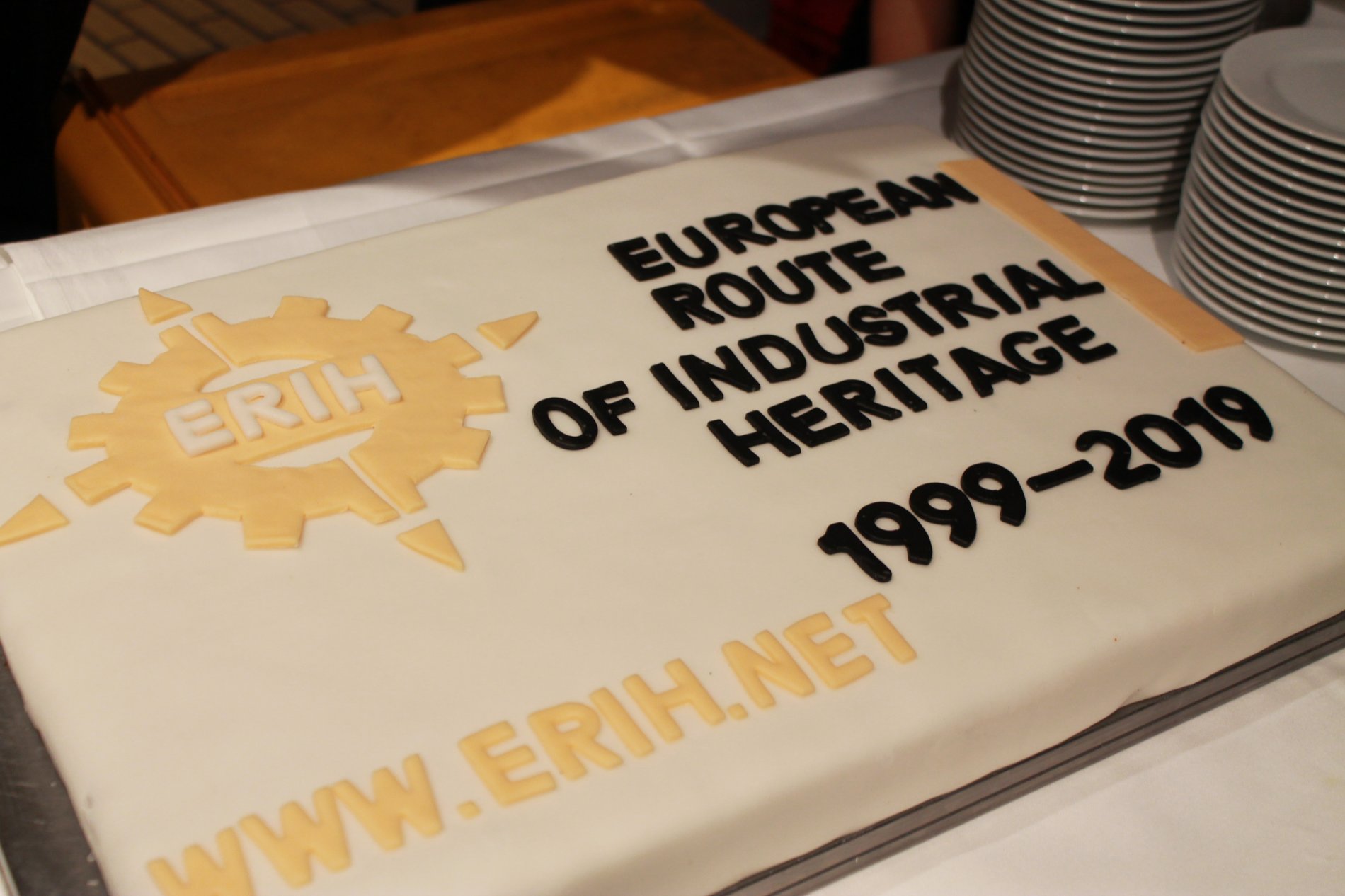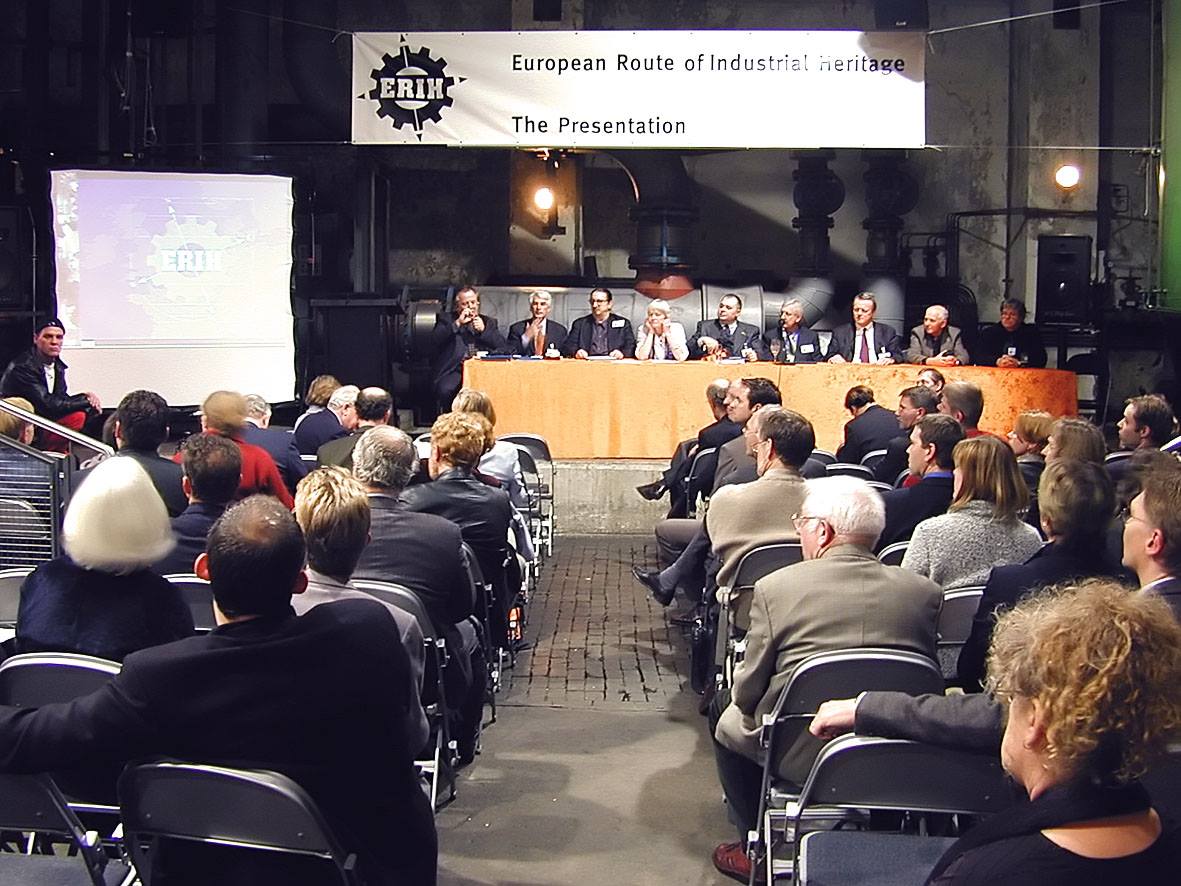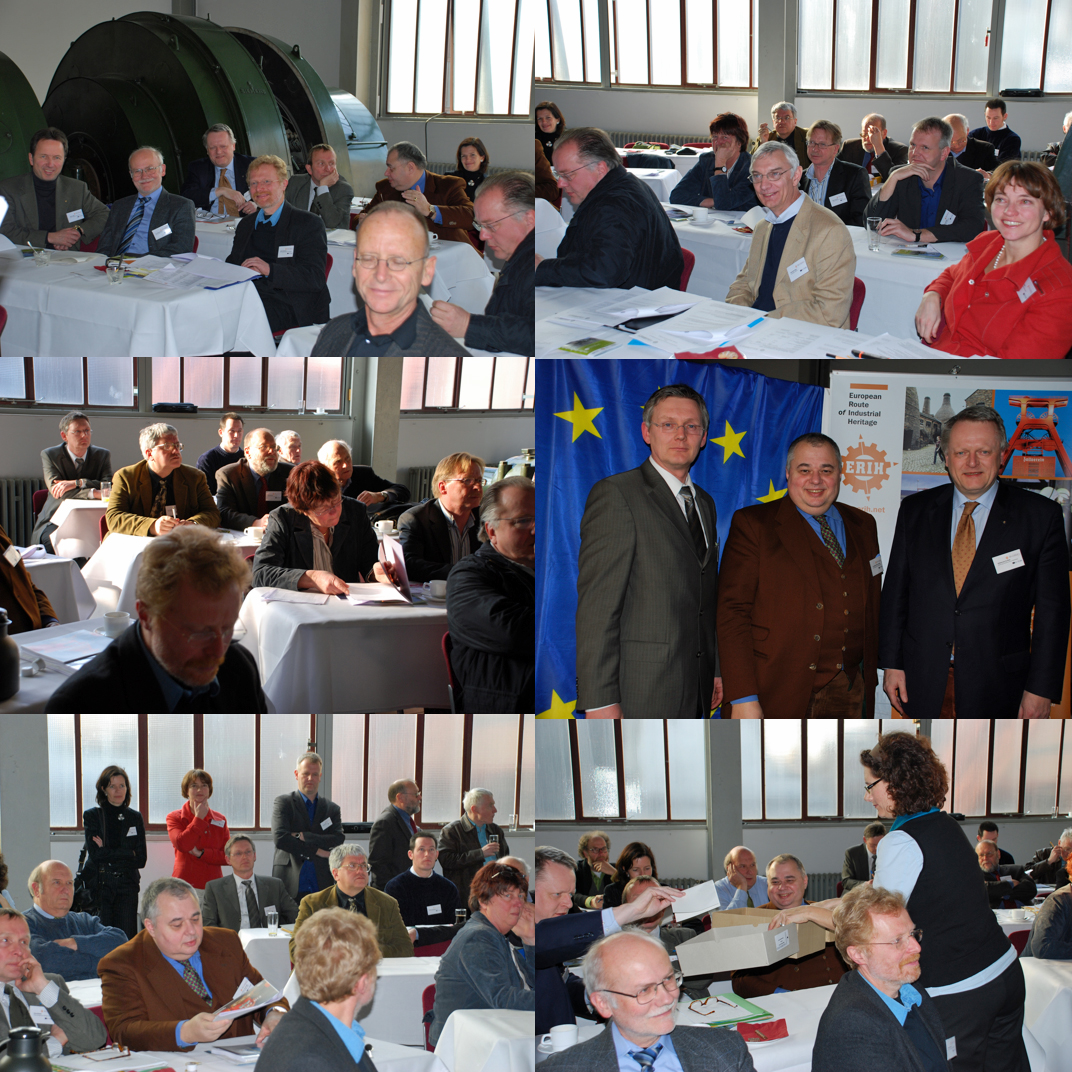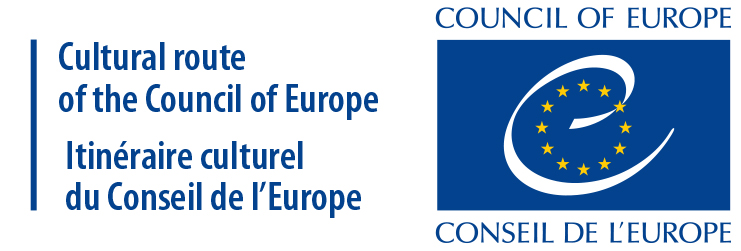ABOUT US – ERIH’s HISTORY
ERIH's origins go back to the turn of the millennium, to 1999: on the occasion of the 50th anniversary of its foundation and the 25th anniversary of the " European Architectural Heritage Year 1975" and to celebrate the transition to the year 2000, the Council of Europe had called on its member states to participate in a campaign under the theme "Europe, a common heritage". The objectives of this campaign were, among other things, to raise public awareness of the values of the man-made environment (cultural landscape and architectural heritage), to highlight the economic resources of this heritage for sustainable development and to encourage voluntary work to protect and preserve this heritage.
The Ministry of Urban Development and Monument Preservation of the State of North Rhine-Westphalia (D) then invited institutions and organisations to submit project ideas for participation in the campaign. The (now dissolved) German Society for Industrial Culture (DGfI) proposed to implement a pan-European network that would help to support the establishment of industrial heritage as a tourism brand. The network should also help to promote the recently opened "Route of Industrial Heritage" in the Ruhr area, in the development of which DGfI was involved, in its start-up phase. As industrial heritage has hardly ever been marketed for tourism, both tourists and tourism organisations in particular should be convinced of the attractiveness of industrial heritage sites as excursion and travel destinations and include these sites in their advertising campaigns.
What’s behind this idea?
Industrial history is a crucial part of Europe's past, for nothing has left its mark so clearly as the two centuries following the start of the Industrial Revolution.
There is a great deal of European common ground waiting to be discovered. For a start, the living and working conditions of the industrial age were more or less the same, assuming that a miner in the Ruhr or the valleys of Wales dug for the same coal in a very similar way. They even migrated across Europe in search of 'black gold'. This example shows that the peoples of Europe share the same memories of industrial history, which are part of the common European identity. Today, people in all European countries look back on a time that has faded into the past, symbolised by thousands of industrial monuments, which are cherished and preserved as witnesses to our technical, social and migratory history, and as landmarks of a cultural identity of all citizens that has evolved through history. They urgently need our protection, because without the past there is no future.
Over the past two decades, many of the same industrial monuments have become symbols of change. They are not only revitalised in a museum context, but also reused to live and work in. They are the setting for the creation of new and traditional products and even goods and services of the so-called creative industries, following the concept of 'regeneration through heritage'. Last but not least, the thousands of 'cathedrals of work' have become the most popular attractions of European cultural tourism, with millions of visitors creating a spirit of change in the old factories. Industrial tourism is not a niche market, but a broad movement that inspires many people.
But preserving old industrial sites and presenting them as museums is a challenge that requires innovative solutions. It should be fun, not a burden, as we have the opportunity to transform the industrial areas of the past into vibrant centres of our cities. ERIH as a network seeks to support this by providing relevant tourist information on Europe's industrial heritage.
EUROPEAN UNION SUPPORTS THE BUILDING OF THE ERIH NETWORK
The government of North Rhine-Westphalia accepted this proposal and supported the DGfI in its search for interested partners in other European countries. Institutions from a number of countries (B, D, GB and NL) took up the ERIH idea and joined forces to apply successfully for funding from the EU's Interreg II C North-West Europe programme (that's why the compass rose on the cogwheel in the ERIH logo is oriented to the northwest) to develop a master plan. This plan, submitted in 2001, illustrates the economic potential of industrial heritage as a tourism brand and sets out the possible structure of a pan-European network of Anchor Points (including their quality standards), regional routes and thematic routes.
ERIH Masterplan - Summary
Duisburg Declaration
Further EU funding (INTERREG IIIB-North-West Europe) ensured the implementation of ERIH, starting with the countries of North-West Europe, but extending to other countries by the end of the initial phase.
-
The funding request in detail
The original funding request for the implementation of the ERIH network reads as follows (concise description):
"North-west Europe was the cradle of the Industrial Revolution. The legacy of the most radical change in economic history is a crucial element in the continent’s identity. Yet, as a result of modern structural changes, many parts of Europe have de-industrialised, leaving unemployment and physical dereliction. Dealing with such sites is expensive, calling for innovative solutions; a redundant plant is rarely viewed as a heritage resource. As industrial history is a common European heritage and the protection of such sites is such a difficult task, it was felt that it is an issue that could be appropriately tackled through co-operation between member states. To encourage the appreciation, understanding, protection and promotion of this common history as a means of achieving economic growth, the European Network of Industrial Heritage was formerly established under the ERIH Interreg II C project. Within this first ERIH a Master Plan was developed, identifying concrete ideas and activities to promote European Industrial Heritage.
Objectives
The aim of the five year project, which brings together a dozen authorities, academic institutions, not-for-profit industrial heritage organisations and tourism bodies from three different member states that formed the heart of the Industrial Revolution, is to implement the master plan developed during ERIH I. The underlying objectives are to protect Europe’s industrial heritage sites and use their preservation as a motor for the development of regions that are often suffering from economic decline.
ERIH seeks to establish itself as a European brand for industrial heritage. To make this brand visible, ERIH develops a corporate design, including a logo, signage and print products.
Main actions
The ERIH network intends to encourage the trans-national transfer of knowledge and the development of joint marketing strategies and cross-border initiatives. The project’s main instrument of communication will be the ERIH website, which will act both as a forum for experts to share knowledge and experience and a promotional tool to market industrial heritage to the public. Links to tourist websites and other organisations will help to raise public awareness, attract more visitors and ensure ERIH’s cross-sector integration. The website will also act as a promotional platform for Europe’s industrial heritage and a virtual library for the reports and documents produced during the project. The project will also publish a trans-national leaflet in four languages and promotional brochures for the regional routes.
The route system
A key element of the project is the establishment of a network of Anchor Points, approx. 60 important industrial heritage sites possessing a well developed tourism infrastructure. For the final selection of the Anchor Points a Seal of Quality will be developed.
The job of the anchor points, which will be distinguished by common external and internal signage to show they are part of the network, is to provide information about industrial heritage and promote the ERIH philosophy. From each of these anchor points ‘regional routes’ will start, linking to smaller industrial heritage sites, so-called Key sites. The creation of the regional routes, which will be piloted in the partner regions, is designed to encourage tourists to visit the regions’ industrial heritage sites, thus stimulating local tourism. Alongside these actions, the project will develop Trans-national Theme Routes showing the historical and industrial links between the different European countries. Unlike the regional routes, the virtual thematic routes will be targeted at encouraging the exchange of information between experts and special interest groups.
ERIH intends that the network will become a pan-European one, integrating partners from across the world. To this end, it will organise seminars and workshops to inform the wider public about the network’s benefits." -
Project partner in the build-up phase
PROJECT PARTNERS AND CO-FINANCES OF INTERREG IIIB FUNDING
D: Nordrhein-Westfalen Tourismus e.V. Cologne/Düsseldorf (Lead Partner)
D: Ministry of Building und Transport NRW, Düsseldorf
D: Ministry of Economic Affairs and Energy NRW, Düsseldorf
D: Projekt Ruhr GmbH, Essen
D: World Heritage Site Voelklingen Iron Works, Völklingen
NL: Stichting Industriecultuur Nederland, Alkmaar
NL: Provincie Noord-Holland Afdeling Zorg, Welzijn en Cultuur, Bureau, Monumenten & Archaeologie, Haarlem
UK: Essex County Council, Chelmsford
UK: Borough of Telford and Wrekin, Telford
UK: Torfaen County Borough, Torfaen
UK: University of Manchester, Field Archaeology Centre, Manchester
MAIN ACTIVITIES
To promote the new brand, ERIH has developed a corporate design, including a common logo, signage at ERIH sites and information materials.
The key communication tool for the project is the ERIH website. As the main promotional platform, it showcases industrial heritage to the general public and encourages people to visit industrial heritage sites. Extensive information and a wealth of links to other websites, tourist offices and other organisations and initiatives help to attract visitors. With its extensive background information on Europe's industrial history, the site can also be seen as a virtual library, providing a forum for the exchange of experiences between experts and lay people with a keen interest in the subject.
A more personal form of exchange is provided by conferences and workshops. News about the network and industrial heritage in general is disseminated through newsletters, press releases and the ERIH Facebook page. Finally, ERIH strengthens links between heritage sites and relevant destination marketing organisations.
MOST IMPORTANT: TOPIC-BASED NETWORK MARKETING
Network marketing within a theme-based network is one of the few ways to promote industrial heritage in a sustainable way while competing with a plethora of tourist brands and immense media coverage.
Industrial heritage is already well represented on the European market. The problem is that individual sites are often poorly or not at all perceived. Instead of competing with other sites and regions, it seems more effective to work together to raise public awareness. This strategy is more promising than fighting for attention alone.
And: The millions of visitors who flock to the already well-known and well-established sites are proof of the public interest in this issue and, therefore, in other industrial heritage sites. Our aim is to inform all these visitors on the spot (and via the Internet) about all the other sites in the network. This dramatically increases the number of crucial direct customer contacts, at least compared to traditional marketing based on a single site. Best of all, this leverage is available at reasonable prices - our membership fees. There is no more economical way to install a similarly effective marketing strategy for individual sites.
Shopping centres are well-known proof that this strategy works. The shared advertising message leads to shared success on the ground. And please note: Attention is not only determined by an attractive theme, but above all by the quality of the location. That's why selected and well-received sites with high quality standards take on a leading marketing role as 'Anchor Points', thus promoting the entire network. This hierarchy of external perception also benefits the smaller sites that are part of the Regional Routes and the European Theme Routes, in the spirit of 'all for one and one for all'.
... AND TODAY?
ERIH has become the largest information network for tourists interested in Europe's industrial heritage.
It is a registered association under German law with a steadily growing membership, established after the end of INTERREG funding in 2008.
While the ERIH website listed some 650 attractive industrial heritage sites at the end of the funded development phase, it now includes more than 2,200 sites from all 51 countries that are considered part or all of Europe from a political, cultural or geographical point of view.
EU SUPPORTS ERIH AGAIN
Renewed EU funding will enable ERIH to develop its information portal and fund a range of other activities. Recognised as a pan-European network for the promotion of Europe's industrial heritage, it has been awarded another funding period since October 2014, provided by the Creative Europe network funding programme. This funding is used, among other things, to promote networking through projects to exchange experiences at regional, national and European level. This is achieved in particular through the ERIH's annual conferences, each of which focuses on a topical issue related to industrial heritage and tourism.
Since 2019 the European Route of Industrial Heritage has been certified as a 'Cultural Route of the Council of Europe"; the certification was renewed in 2023.
Are you interested? Please check here for further information on ERIH membership.





